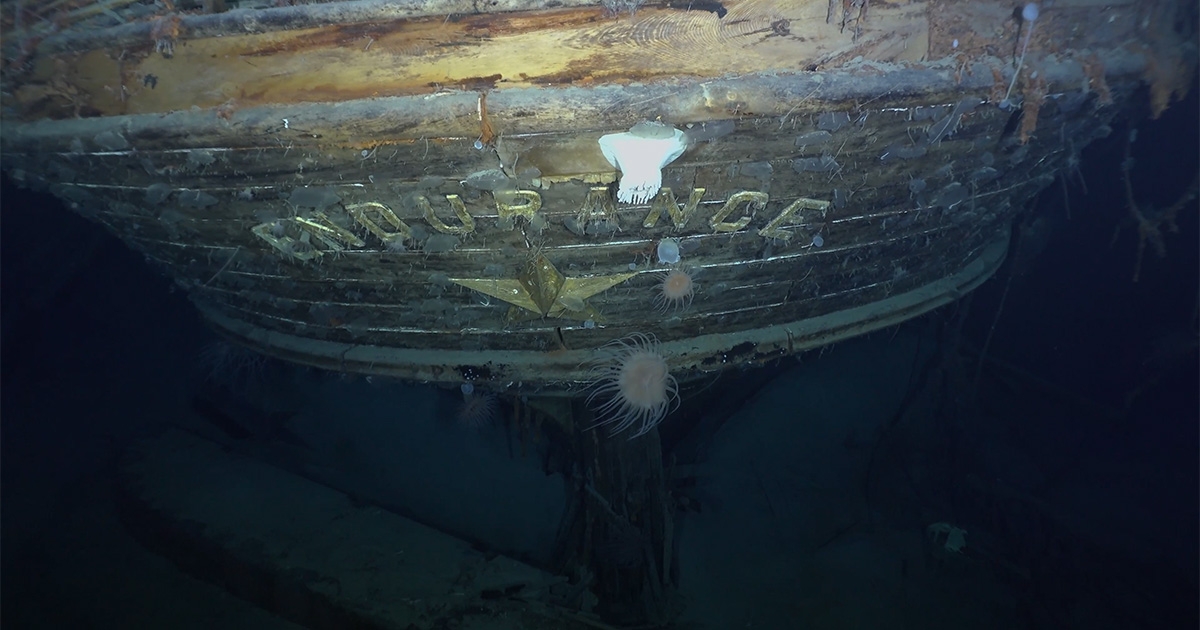Preserving the Past: 4K Imaging Shines Light on Subsea Historial Artifacts

In March 2022, subsea explorers made a profound discovery at a depth of 3,008 m (9,869 ft) below the surface of the Weddell Sea’s icy Antarctic waters.
The Endurance22 Expedition, supported by the Falklands Maritime Heritage Trust, located the wreck of the Endurance, a wooden ship that sank off the coast of Antarctica in 1915 after getting trapped in the pack ice. The story of the Endurance’s sinking—and the survival of its captain, renowned British explorer Sir Ernest Shackleton, and the entire crew—is a remarkable tale of perseverance, ingenuity, and camaraderie in the face of dire circumstances.
The discovery of the Endurance is an incredible feat. Since its dramatic sinking, numerous attempts have been made to find the lost ship, and all failed. Punishing polar conditions including storms, rough seas, and cold winds at speeds up to 14 knots make working in this region particularly difficult. In fact, Shackleton himself described the area as “the worst portion of the worst sea in the world.”
MISSION EQUIPMENT
Key to the mission’s success was the experience and leadership of the Endurance22 team, which included 64 people in addition to 46 crewmembers, as well as the vessel and equipment used. Mission operations were conducted on the S.A. Agulhas II, a South African polar research and logistics vessel capable of breaking ice up to 1 m thick when traveling 5 knots.
The expedition deployed SAAB Sabertooth hybrid AUV/ROVs capable of reaching sites up to 100 miles away from their launch point, operating at depths of 4,000 m (13,123 ft) and supported by an infinitesimally thin fiber optic tether tied back to the host ship.
Operating these vehicles in polar conditions presented many unique challenges for the team. According to Nico Vincent, Expedition Sub-Sea Manager, the team had to rethink conventional dive operations and pioneer novel launch and recovery procedures. Among the expedition’s major challenges was the ever-present pack ice that surrounded the ship and drug it along as the ice migrated in a complex and difficult to forecast system. Since the S.A. Agulhas II could not keep a fixed station, the subsea vehicles had to return to a new recovery zone the size of a tennis court using only acoustic and inertial navigation.
As recently as 2019, in a previous attempt to find the Endurance, an expensive AUV was lost under the pack ice after communications failed and updated navigation data could not be sent. A key difference for the Sabertooth vehicles used on Endurance22 was the fiber optic tether, which enabled constant communication with topside operations.
SUBSEA 4K IMAGING
The SAAB vehicles were outfitted with imaging technology capable of producing high quality data. In addition to a laser scanner capable of creating highly accurate 3D models, the vehicles included DeepSea Optim SeaCam 4K cameras. The Optim SeaCam provided real-time 4K video over the small fiber tether from the hybrid AUV/ROV back to the team on the S.A. Agulas II. Depth rated to 6,000 (with option to 11,000 m), the Optim SeaCam was chosen for its easy integration, reliability, and ability to provide low-latency, live video during operations in the harsh conditions of the deep Antarctic waters.
The result of the expedition was stunning imagery of what marine archaeologist Mensun Bound described as the “finest wooden shipwreck [he has] ever seen.” There are no wood-eating micro-organisms present in the freezing waters where Endurance is located, resulting in the ship’s remarkably well-preserved condition.
The Optim SeaCam broadcasted live footage to mission operators allowing the team to experience the discovery in real-time. In the cold, clear polar waters, the details in both the shipwreck and the environment around it were stunning.
RESEARCH POTENTIAL FOR 4K IMAGING
Under the Antarctic Treaty, the site of the Endurance is considered an historic monument. That means that no part of the ship may be disturbed, ruling out the collection of any samples, even for research purposes. Scientists across disciplines as diverse as archeology, biology, and material sciences will be using the imagery data from Endurance22 to further our knowledge of the natural world.
The Endurance22 images captured by the Optim SeaCam demonstrate the potential for future uses of HD and 4K imaging in scientific research and discovery. The ability to capture high quality imaging data from sensitive environments like this provides scientists with an avenue for non-destructive research, broadening our understanding of these formerly out-of-reach places while ensuring they remain protected. Already, marine archaeologists and biologists are combing through the video returned from the expedition to learn more about the wreck site, the life that now calls it home, and the unique environment in the cold, dark depths of the Southern Ocean.
Furthermore, studio-grade imaging at 4K provides storytellers with the means to engage and educate the public on discoveries like the wreck of the Endurance and their significance. This fall, National Geographic’s Explorer series will release a documentary on National Geographic Channels and Disney+ chronicling the Endurance22 Expedition featuring video and photogrammetric data collected of the wreck.
ABOUT THE OPTIM SEACAM
The Optim SeaCam provides a unique tool for scientists, subsea explorers, and film makers combining superb 4K imaging capability with intuitive and familiar controls, flexible integration options, and an unprecedentedly rugged design.
Ideal for real-time viewing in 4K, the Optim SeaCam features an extended zoom range and a 350 mm minimum object distance at full telephoto that makes for stunning close-up images and brings out the smallest details. The design is lab and field proven—having been subjected to more than 10,000 cycles to trench depths during design validation and holding the distinction of being the first 4K camera film the deepest point in the ocean at Challenger Deep in the Marianas Trench.
For more information, visit: www.deepsea.com/optim.
To read the full article, which was featured in ON&T August 2022, click here.

